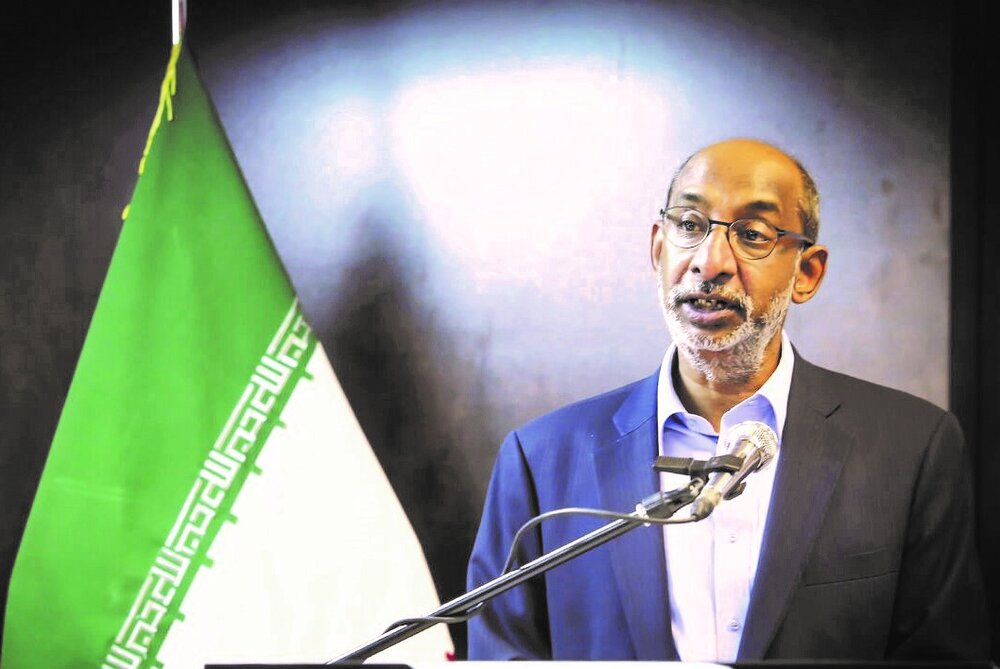Tehran Times play important role in deepening Iran-India connections

In the 40 years since its founding, the Tehran Times has been an important part of the Islamic Republic. This well-known newspaper began its journey in 1979 to “air the voice of the Islamic Revolution”. It soon became an important window on Iran and a useful source of news for the country’s foreign observers.
Congratulations to Tehran Times and to all members and staff, past and present, on achieving the important milestone of 40th years of publishing. The world of news reporting is undergoing fundamental and radical changes due mainly to the advent of the internet and the rise of social media. In these times, the differentiator will be that news agency or publication which can compete with social media which is fast redefining how news is generated, disseminated, and consumed. My best wishes to the staff and readers of Tehran Times, towards a future that is exciting and challenging.
The year 2020 also marks another important anniversary – it is the 70th anniversary since signing of the India-Iran Friendship Treaty. The India-Iran relationship is unique and historic. The centuries-old relationship between two of the world’s great civilizations endures to this day. A shared history and heritage, ranging from the arts and culture to literature and architecture, has moved seamlessly into the 21st century.
Iran is not only our neighbor but it is an important partner. Our relations are marked by characteristic warmth. They are now moving in ever newer directions. This is illustrated by the medical relief assistance extended by India to the friendly people of Iran. The items include high-tech equipment for setting up a COVID-19 testing laboratory as also personal protection equipment.
The recent years have witnessed frequent high-level meetings and exchange of visits which have expanded the scope and depth of bilateral relations. Prime Minister Modi and President Rouhani have held four meetings in as many years including on margins of international multilateral sessions. India’s External Affairs Minister, Dr. S. Jaishanker was in Tehran in December 2019 for the 19th Joint Commission Meeting. And, in January this year, Foreign Minister Zarif was in New Delhi and addressed India's annual flagship strategic forum, the Raisina Dialogue.
While our shared history, culture, and close people-to-people contacts are well known visible markers, the India-Iran relationship is sufficiently dynamic and nimble. It is adapting to the rapid and deep-seated changes that are underway in both countries. A new generation of Indians and Iranians are reaching out to each other including through the universal and shared medium of cinema. Indian films are just as popular in Iran as are Iranian movies in India. Both sides are also committed to promote parliamentary exchanges. All of these exchanges and visits are being facilitated by the decision to establish, in May 2018, an electronic visa arrangement system for citizens of both countries.
As we enter into the third decade of this century, trade and economic relations are expanding to encompass an ever widening trade basket, beyond the traditional items of agricultural produce. Basmati rice and tea remain ever popular in Iran just as Iranian pistachio and saffron are in India. But now, the chambers of commerce in both countries are exploring expanding trade into new areas such as light engineering items, paper, and paper products and, pharmaceuticals, to name but a few of the sectors. Both sides are working towards concluding a bilateral Preferential Trade Agreement (PTA) which would boost trade.
People to people contact has been identified as an important dimension of the relationship. There is a rise in the number of Indians undertaking pilgrimage in Iran. The number of visitors now numbers around 80,000 each year. Higher education is yet another dimension linking our two countries. Iran’s medical universities host over 250 students from India while Iranian students are increasingly looking towards India as an attractive destination for undertaking studies in advanced engineering and software programmes institutes. The Sushma Swaraj Foreign Service Institute in New Delhi organized an Indology course for young Iranian diplomats under the rubric “Understanding Contemporary India”. Discussions are underway to take this programme forward this year. Both sides are also working on establishing an Indian Studies Centre at Tehran University.
The areas enlisted above are a lesser known facet of a multidimensional and multi-sectoral partnership. They add on to an already strong foundation of bilateral relations and a shared commitment towards deepening our engagement in the areas of connectivity projects (Chabahar Shahid Beheshti Port and the Chabahar-Zahidan rail line) and, the International North South Transport Corridor (INSTC). The Chabahar project is especially unique in that it is a trilateral project involving Afghanistan.
Institutes such as the Tehran Times play an important role in fostering and deepening bilateral connections, in explaining a complex globalised world to its readers. This requires objectivity and sensitivity, and a careful understanding of the deep socio-political complexities that are intrinsic to any modern nation state. India is no exception. It is a vast country of over a billion people, each of who is proud to be an Indian. This was most recently evident in the outpouring of national grief at the untimely loss of the world renowned actor Irfan Khan.
In closing, I once again extend my warm congratulations to all staff and members of Tehran on your 40th birthday.
Leave a Comment